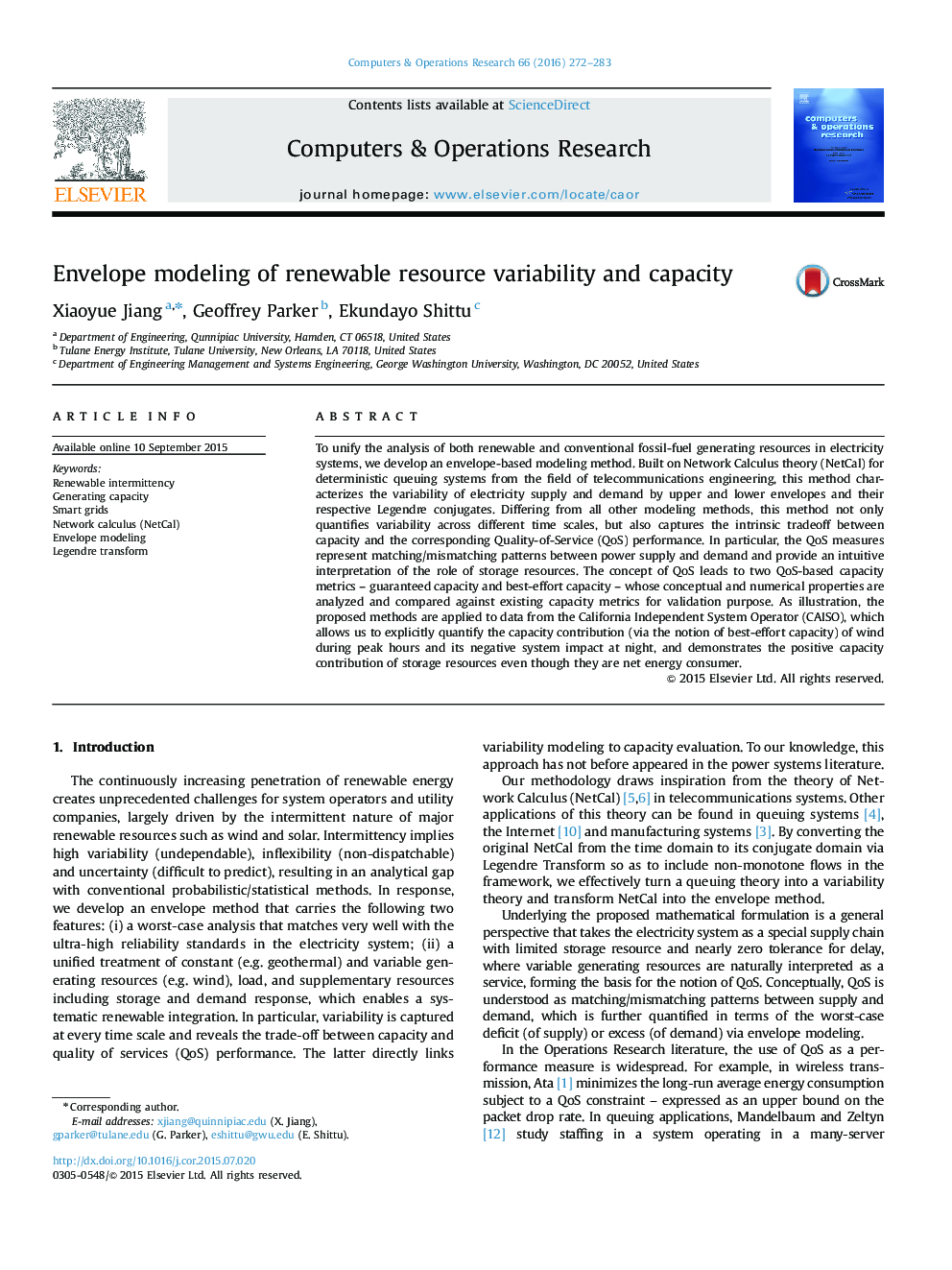| کد مقاله | کد نشریه | سال انتشار | مقاله انگلیسی | نسخه تمام متن |
|---|---|---|---|---|
| 474992 | 699189 | 2016 | 12 صفحه PDF | دانلود رایگان |
• Developed a worst-case oriented variability modeling called envelope method.
• Characterized variability of renewables across multiple time scales.
• Characterized capacity – QoS tradeoffs.
• Proposed two QoS-based capacity definitions and compared with existing ones.
• Implemented envelope analysis with 1-min data from CAISO and gained new insights.
To unify the analysis of both renewable and conventional fossil-fuel generating resources in electricity systems, we develop an envelope-based modeling method. Built on Network Calculus theory (NetCal) for deterministic queuing systems from the field of telecommunications engineering, this method characterizes the variability of electricity supply and demand by upper and lower envelopes and their respective Legendre conjugates. Differing from all other modeling methods, this method not only quantifies variability across different time scales, but also captures the intrinsic tradeoff between capacity and the corresponding Quality-of-Service (QoS) performance. In particular, the QoS measures represent matching/mismatching patterns between power supply and demand and provide an intuitive interpretation of the role of storage resources. The concept of QoS leads to two QoS-based capacity metrics – guaranteed capacity and best-effort capacity – whose conceptual and numerical properties are analyzed and compared against existing capacity metrics for validation purpose. As illustration, the proposed methods are applied to data from the California Independent System Operator (CAISO), which allows us to explicitly quantify the capacity contribution (via the notion of best-effort capacity) of wind during peak hours and its negative system impact at night, and demonstrates the positive capacity contribution of storage resources even though they are net energy consumer.
Journal: Computers & Operations Research - Volume 66, February 2016, Pages 272–283
